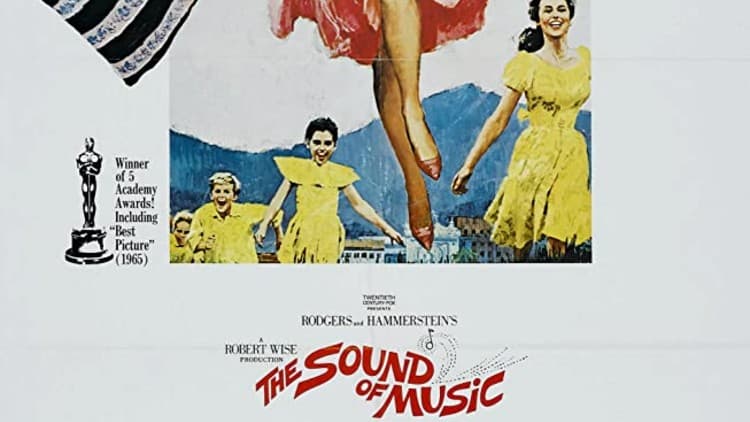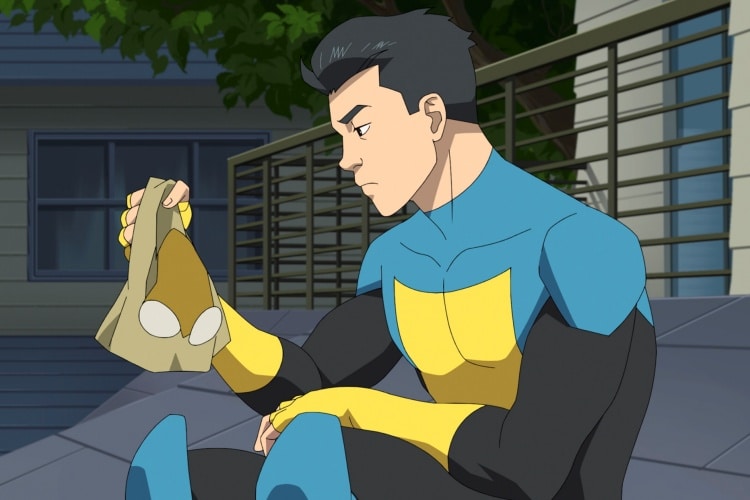How do you solve a problem like Maria?
Main Cast: Julie Andrews, Christopher Plummer
Director: Robert Wise
First released in 1965, The Sound of Music tells the tale of the real-life Von Trapp family. Set in the years directly preceding the Second World War, the film is a musical version of both a fairytale romance and a turbulent period in history. At the center of the story is Maria (Julie Andrews). Maria is going to be a nun. The only problem is that she seems to almost entirely lack the personal discipline required of such a commitment. In order to give Maria a chance to examine her choices, Mother Superior (Mary Martin, who pioneered the role of Maria on the stage) sends Maria, for the first time in her adult life, outside the protective walls of the convent. Maria is to be the governess for the Von Trapp children. Unbeknownst to her, there are seven children, who have managed to scare off a large number of governesses in a short period of time. Maria enters the house naïve and afraid, and throughout the film faces her fears and her young charges, as well as chasing down exactly what it is she wants from her life.
As in most musicals, people do seem to burst into song at nearly any available moment. In The Sound of Music, there is at least some thin reasoning behind much of the singing – it isn’t fantasy, but built into the story in a more organic manner. Maria sings as a matter of course, having brought her guitar into this music-less household. She brings her music into this somber, rigid place and uses her skills to teach the children the joys of singing. Many of the musical numbers revolve around this “tutelage”, rendering them less odd and annoying than they might have been. Others take on a more traditional form, with two teenagers singing and dancing their way through their first real flirtation, or Mother Superior warbling the now famous “Climb Every Mountain” to a despondent Maria. Even the most egregious musical oddities are forgiven in The Sound of Music, however, because it is, in the finest tradition of the 1960’s, a lavish musical. It doesn’t pretend to be otherwise and singing and dancing simply lend it an air of sweetness and enthusiasm inherent to many musicals of the era. Some of the songs are plain silly (the”Goodnight” song always makes me cringe a little) while some are truly touching (the Captain’s version of “Edelweiss” makes me tear up a little, I can’t help it). Most of them are well performed and fun, enough so that I desperately wanted to be Liesl, sixteen going on seventeen, for months after seeing the film.
I read in later years that the filming of this movie was not all that pleasant. If true, it certainly doesn’t show in the performances. Julie Andrews shines with youthful exuberance as the confused, outspoken and ultimately endearing Maria. She puts in a perfect performance, maturing throughout the film from a frightened girl to a determined woman. She seems to have a genuine rapport with the children, and their scenes together take on a fairy-tale glow as she brings out the child in every one of these heretofore far too serious young people. The young actors are not magnificent, in truth. Their line delivery is stilted; their postures are often stiff and unnatural. Charmian Carr as the teenager Liesl has the largest of all the children’s roles and she simply isn’t a magnificent actress. Somehow, this lack of polish makes them all the more endearing. They aren’t hyper-precocious,annoyingly precious little actors-from-the-womb, they feel like regular kids, asked to do a job that’s hard for regular kids. It doesn’t make for a dazzlingly professional performance, but it does make them sweeter, more real and more forgivable for all their actorly failings.
Christopher Plummer is simply magnificent as Captain Von Trapp. Rigid, still mourning his late wife, unable to deal with his children through his own grief, he takes on a comically stiff and proper air that is a wonderful foil for the bubbly and spontaneous Maria. As he slowly warms to having laughter and fun in his house once again, we see flickers of the man he might once have been – the man whom only Liesl really remembers. It is through Plummer’s character that we learn of the deeply divided state of political opinion in Austria during this time. He is outspoken in his rejection of the Nazi regime and refuses to compromise his convictions to appease what appears to be the inevitable new rulers of his beloved country. Unlike a more serious film on the topic, The Sound of Music introduces some themes about the Nazi occupation of Europe in a way in which children can relate. I discovered it to be an excellent opener for a deeper discussion of the events of the time, and why the Captain might have been so adamantly opposed to this new “regime”. Not too much information for the smaller set, but enough for a later discussion if they’re ready to absorb more material.
The Sound of Music is filmed in the bright, beautiful “Technicolor” that so marvelously swirled through so many musicals of the time. Set in Salzburg, and partially filmed on location there, the film is filled with gorgeous vistas, city settings and rolling hills. How much is real Salzburg and how much is actually Germany or California is of no matter, the tone is set and the film feels like Salzburg from beginning to end.
I suppose we all have movies that remind us so strongly of a time or place that we feel it every time we see them. The Sound of Music makes me feel that first touch of understanding of how a movie can take you to another place, another time, let you into the lives of people unlike any you’re likely to meet in your small Wisconsin hometown. The movie has retained its charm through the years, enchanting my kids as it did me, proving that “the musical” will always be something special. The underlying truth in the story is like icing on the fantasy cake, with performances that are defining moments in the careers of nearly everyone involved. Once upon a time, when I saw my first real movie in a real theater, there wasn’t a new animated kid’s movie with some sly adult humor to see every week. Movies that appealed to both kids and adults were unusual, not something every kid got to see. I was one of those kids; The Sound of Music was my special movie.
You can now get a 45th Anniversary edition of The Sound of Music with all sorts of goodies. Enjoy.

Sue reads a lot, writes a lot, edits a lot, and loves a good craft. She was deemed “too picky” to proofread her children’s school papers and wears this as a badge of honor. She is also proud of her aggressively average knitting skills She is the Editorial Director at Silver Beacon Marketing and an aspiring Crazy Cat Lady.







Leave a Reply